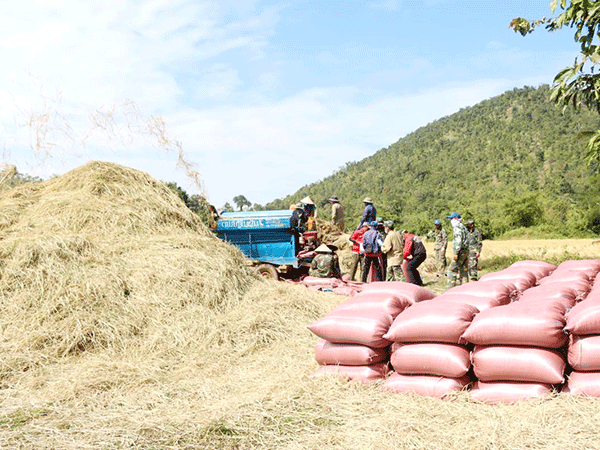Economy will grow by 4.4 percent this year: govt
Despite financial challenges, the government is predicting that the economy will grow by 4.4 percent this year, although this is slightly less than the original target of 4.5 percent.
Deputy Director General of the Planning Department of the Ministry of Planning and Investment, Mr Oula Somchanmavong, recently highlighted the key figures in the country’s economic performance for 2022.
 |
| The agriculture sector contributes to drive economic growth in Laos. |
Gross domestic product (GDP) growth in the first quarter of this year reached 4.5 percent before decreasing to 4.2 percent in the second quarter and 3.8 percent in the third quarter.
Growth was driven by the agriculture and tourism sectors, which have enjoyed a partial recovery following the lifting of travel restrictions that were enforced during the Covid pandemic.
In addition, industry, especially mining and energy exports, have contributed significantly to economic growth over the past nine months.
Mr Oula also said revenue collection had met the target set for the past 9 months, particularly income collected from pilot and ongoing mining projects, natural capital charges, environmental fees related to electricity generation, and from other sources.
Over the past nine months, 24.24 trillion kip of the total 2022 targeted 31.59 trillion kip was collected, while 21.09 trillion kip of the 34.69 trillion kip budgeted for expenditure was spent.
In addition, foreign currency was made available for priority imports such as fuel, while new sources of foreign currency are being explored so that much-needed import goods can continue to be purchased.
However, Laos continues to suffer from external impacts, including the global economic downturn, Russia-Ukraine conflict, the Covid pandemic, and natural disasters.
In addition, the country has experienced high inflation, which increased from the 30.01 percent year-on-year recorded in August to 34 percent in September, according to the Lao Statistics Bureau.
The 22-year-high inflation rate is driven by the surge in the price of food, medicines, fuel, and other consumer goods.
The Russia-Ukraine conflict and the Covid outbreak have disrupted economic activities, with high inflation resulting in households trimming spending on consumer goods, affecting output growth.
The rising cost of living has decreased consumer purchasing power, and input supply constraints have reduced the growth prospects for agriculture and industry.
Furthermore, the depreciation of the kip has had a devastating effect on the economy and people’s livelihoods.
Just recently, the Bank of the Lao PDR placed restrictions on currency exchange units, banning them from selling foreign currency.
The ban supports the government’s attempts to give commercial banks a greater role in the purchase and sale of foreign currencies, while limiting the role of money exchange units in currency trading.
By Somsack Pongkhao
(Latest Update October 26, 2022)
|